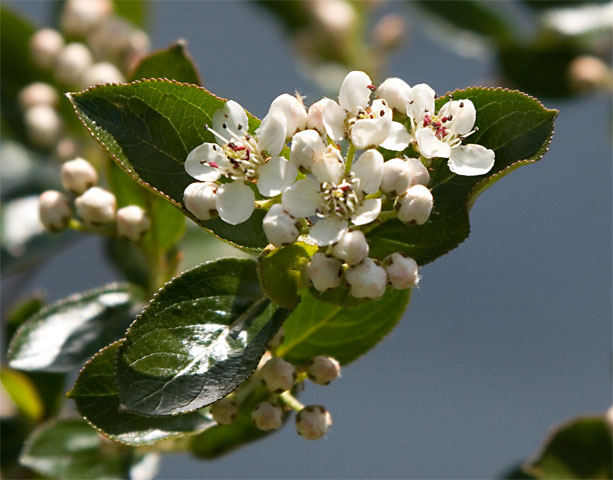 Blackhaw Viburnum
Blackhaw Viburnum
Viburnum prunifolium
From Illinois
Honeysuckle family (Caprifoliaceae)
Description: This is a branched woody shrub or small tree up to 15' tall. The young bark of small branches is gray and slightly rough, while the old bark of the trunk or larger branches is grey and rough with flat-topped plates. The opposite leaves are up to 3" long and 1" across; they are ovate or ovate-obovate, glabrous on both their lower and upper sides, and finely serrated along their margins. The slender petioles are up to 1" long and reddish. The buds of these leaves are short.
Cymes of flowers about 3-5" across develop from the axils of the leaves; each cyme is much branched, but sessile at the base. Each flower is about ¼" across; it has 5 white petals that are well-rounded and longer than the sepals. There are 5 long stamens with slender white filaments and yellow anthers, and a small pistil at the center of the flower that is cream-colored at the base. The blooming period occurs from mid- to late spring. The flowers have a strong and pleasant fragrance; they are produced at about the same time as the leaves. Each flower is replaced by a fleshy ovoid drupe about 1/3" (8 mm.) long; this drupe becomes blue-black at maturity, sometimes with a whitish bloom. Inside each drupe, there is a single stone (a seed with a hard coat) that is flat on one side and convex on the other. The drupes are sweet and edible, although somewhat thin-fleshed because of their stones. The root system consists of a branching woody taproot.